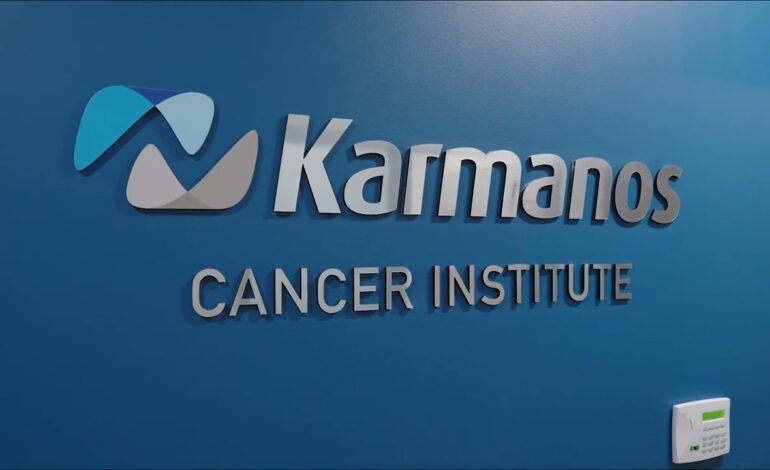DETROIT — The Barbara Ann Karmanos Cancer Institute cancer centers and other organizations nationwide recognized March as Multiple Myeloma Awareness Month. Multiple myeloma is a type of blood and bone marrow cancer, specifically targeting plasma cells, the cells responsible for producing antibodies.
There is no cure for multiple myeloma, but there have been improvements in treatments with advances made by Karmanos physicians and researchers, according to the Karmanos Cancer Institute. Clinical trials are offered for patients at Karmanos as well as significant advancements in their standard of care, which have resulted in increased survival rates, with the average now being 13 years for multiple myeloma patients.
Andrew Kin, a hematologist and medical oncologist at the Karmanos Cancer Institute, told The Arab American News that treatment can now directly target the multiple myeloma, thus positively impacting survival rate.
“A big reason for this improvement in survival is that myeloma treatments are now often specifically targeted to the myeloma in some way, and many of these therapies have been approved within the past 10 years,” Kin said.”As a result of more targeted therapy, these treatments are often more effective and can have fewer side effects than older, more toxic types of chemotherapy.
He also said that while this type of cancer is relatively rare, it is the most common type of blood cancer. He shared that it typically affects the older population, with the average age being diagnosed around 70-years-old.
“It does affect Black individuals about two times as often as those with Caucasian backgrounds and three times as often as Asian individuals,” he said. “Until recently, Arab and Middle Eastern populations were not separately captured in U.S. data, but global data suggests the incidence varies quite a bit by country and region in the Middle East. One consistent theme is that global incidence increases as populations continue to increase and live longer.”
Multiple Myeloma facts and figures provided by the Karmanos Cancer Institute
- In the U.S., the average lifetime risk of getting multiple myeloma is less than 1 percent — about 1 in 108 for men and about 1 in 133 for women.
- Most individuals diagnosed with multiple myeloma are at least 65-years-old, with the average age being 69.
- Less than 1 percent of cases are diagnosed in people younger than 35.
- Due to continued advancements in treatment, multiple myeloma five-year survival rates have steadily increased, now exceeding 60 percent.
All data reported by the American Cancer Society (2025).
Symptoms do not typically emerge in the beginning stages of multiple myeloma. A diagnosis can be made through a blood-test or check-up, and normally occurs incidentally. According to Karmanos, symptoms may include anemia, bone pain or weakness, increased urination, elevated calcium levels, kidney injury, recurring infections, red and white blood cells scarcity and fatigue.
Multiple Myeloma treatment at the Karmanos Cancer Institute
Treatment for multiple myeloma at the Karmanos institute involves Multiple Myeloma and Amyloidosis Multidisciplinary Team (MDT), which includes hematologists, medical oncologists, radiologists, pathologists, pharmacists, dietitians, social workers and genetic counselors.
To learn more about the clinical trials offered at Karmanos Cancer Institute, please visit karmanos.org/clinicaltrials.






Leave a Reply